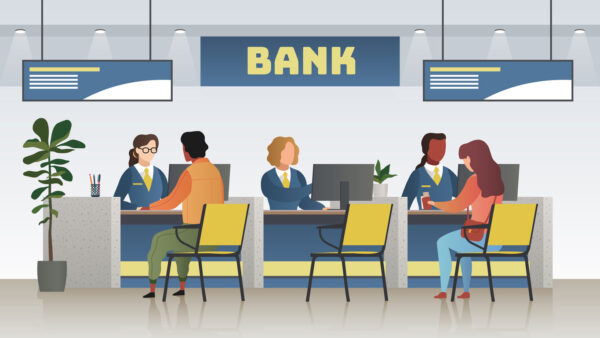These days, there are more options for choosing a new bank than ever before. You can use a regional bank, a national bank, or even an all-online bank, otherwise known as a neobank. But whatever you decide will be based on a lot of factors that you’ll want to keep in mind. Here are a few benefits to look out for when choosing the next bank for your accounts.
1. Branch Convenience
It goes without saying that if you expect to visit your bank at all, you’ll want one nearby. Other benefits don’t really matter if a bank can’t give you the direct service you need when you need it. With today’s peer-to-peer payment apps and mobile banking capabilities, it can seem that a phone is all you need for your financial transactions. Yet there are still some banking services that you’ll need to access in person.
For example, many landlords require a cashier’s check as a security deposit before they’ll rent you an apartment. You can only obtain a cashier’s checks directly from a bank teller. Since you can’t make such deposits using your debit card, you’ll want a bank that’s close. A nearby bank also allows easy cash withdrawals and enables you to talk to a real person if you have any issues.
- Government Insurance
In the case of a bank or credit union failure, there are two government agencies that protect deposits of those with accounts there. Thanks to the Federal Deposit Insurance Corporation (FDIC) and National Credit Union Administration (NCUA), you won’t lose your money. Keep in mind that the protection these agencies offer isn’t all-encompassing, though. They only insure depository accounts, and only up to $250,000.
The FDIC insures banks, while the NCUA insures credit unions. For the safety of your funds, it’s in your best interest to choose a financial institution that is insured by one or the other. Luckily, you’re not too likely to find one that isn’t, but it’s still important to double-check.
- Limited Fees
Many banks will charge a fee to keep your account open, which seems onerous at first glance. But it can often be avoided by maintaining a minimum balance or finding a debit card that doesn’t have those fees. Unfortunately, that common upfront fee isn’t the only one to consider. Other fees won’t be as easy to sidestep and can drain funds from your account further down the line.
Some of them to look out for include out-of-network ATM fees, currency conversion fees, and overdraft fees. If you use ATMs or travel regularly, the first two examples can be detrimental to your savings. That’s why you want to find a bank with fees that won’t get in your way or be overwhelming.
- Virtual Banking Convenience
Convenient accessibility has already been discussed earlier, and it’s true that there’s sometimes no substitute for a nearby bank branch. But it’s equally true that consumers are doing more and more of their banking online and on their phones. That means you’ll want a bank that offers a mobile app or website. For each bank you consider, check to see whether its platform enables capabilities such as mobile account transfers and bill payment.
Some online banking platforms provide extra features like budgeting resources as a free bonus for their users. Banks such as Chase and Barclays let you create budgets directly in their apps and provide information on the subject. These perks aren’t limited to big banks, however. Credit unions like SchoolsFirst can help you track your cash flow and calculate what you must do to reach your financial goals.
- Favorable Interest Rates
Building your savings will happen fastest at an institution with high interest rates and low account maintenance fees. Interest rates dictate the level of growth your savings will achieve each year — the higher the rate, the more you accrue. With low maintenance fees, you won’t need to pay much, if anything, to keep your account open.
Earning interest on your savings is slow going, but it’s worth putting research into getting the best rate. Maybe you don’t have the cash — or stomach — needed to enter the stock market right now. If not, focus on your savings account. While even a high-yield account won’t produce a lot of growth in your savings balance, making some gains is better than making none.
- Neobank Innovation
When considering a regular bank’s online presence, you may contemplate how it would be to go fully digital. With the advent of neobanks, the banking industry is modernizing in a way consumers hadn’t seen before. Neobanks are a new type of bank that exists strictly online and thus avoids the costs of brick-and-mortar locations.
For the consumer, this means that those costs are commonly put into other efforts like new, outside-the-box benefits. A neobank might offer round-up savings features alongside high interest savings accounts and low fees. They also generally aim for more financial accessibility than bigger banks and have lower requirements for credit-building loans and cards.
If you don’t know a lot about banks, the process of choosing one can seem overwhelming at first. But don’t worry — a few days of research will yield a better understanding in the end. Hold off on making any decisions until you’re satisfied with what you’ve found. Use these benefits to get an idea of where to start, and the whole process will go much smoother.

